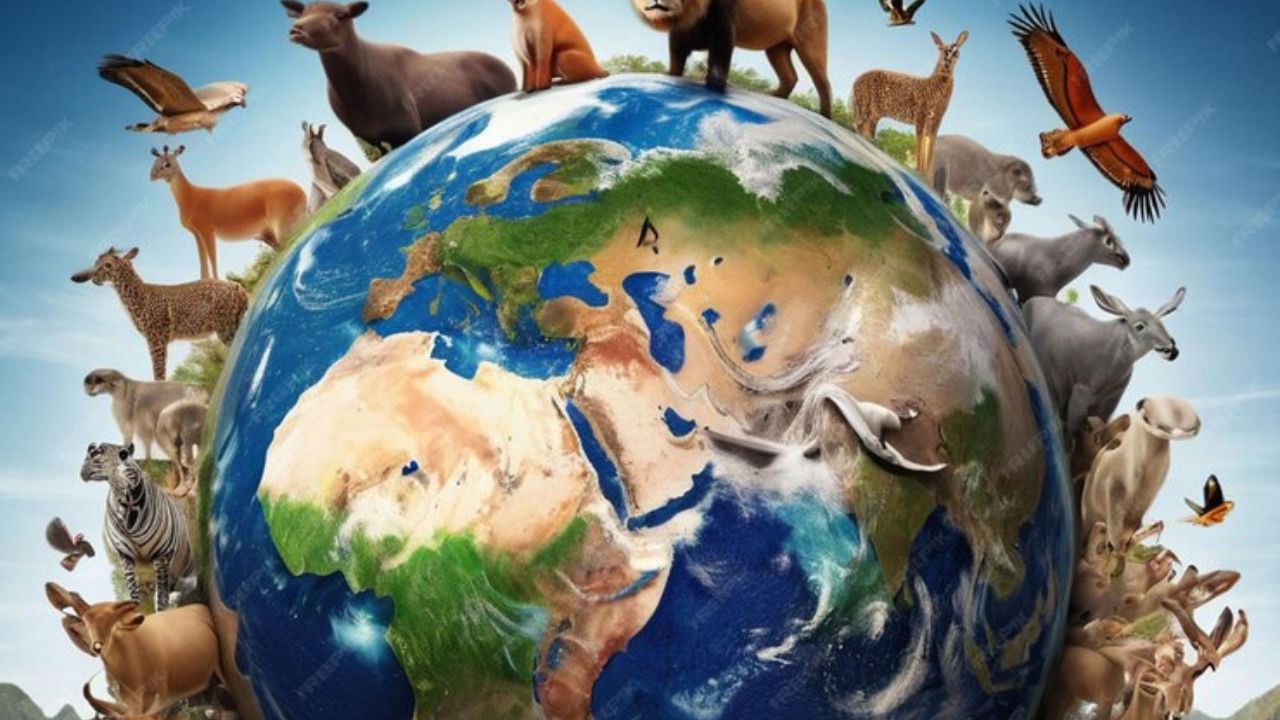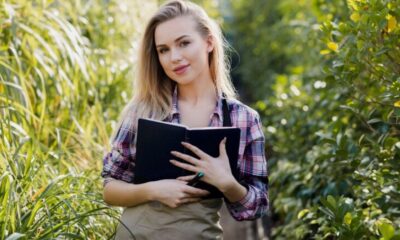Animal
Cats Eye Colors:Unveiling the Mystery

Cats are inherently charming, but Cats Eye Colors hues are among their most captivating qualities. The captivating colors of a cat’s eyes, ranging from intense blues to brilliant greens and rich ambers, can draw anyone in. But what makes these interesting colors? Let us explore the enigma and science underlying cat eye color.
What Determines Cat Eye Color?
A cat’s iris melanin content and genetic makeup work together to define the color of their eyes. A cat’s eyes will be darker the more melanin they contain. Nevertheless, it’s noteworthy that, unlike humans, a cat’s eye color remains unaffected by the color of its fur.
Kittens Start with Blue Eyes
Every kitten has blue eyes from birth. Depending on the breed and genetics, their eye color may vary as they mature. Their true eye color is revealed as the melanin content in their iris rises, usually 4 to 12 weeks after birth.
Common Cat Eye Colors
Blue Eyes
Certain breeds of cats, such Himalayan, Ragdoll, and Siamese, are frequently linked to blue eyes. The lack of melanin in the iris is what gives the eyes their distinct, sky-blue color. It is interesting to note that blue-eyed cats may also be more vulnerable to hearing loss, especially in white cats.
Green Eyes
Cats with green eyes are rather frequent, especially those of breeds like the Egyptian Mau. The cat has a mystical, almost otherworldly appearance due to the hue, which varies from light jade to brilliant emerald. Mixed-breed cats are also frequently observed to have green eyes.
Yellow, Gold, and Amber Eyes
Cats frequently have golden eyes, particularly those of breeds like Bombays and British Shorthairs. Moderate quantities of melanin give these warm tones; some cats have eyes that shine like amber in the sun.
Odd-Eyed Cats
Heterochromia, a rare condition in which one cat’s eye is a different color from the other, affects a number of breeds of cats and typically results in one blue eye and one green or gold eye. White cats are most likely to have odd-eyed cats, which adds even more fascination to their already unusual appearance.
The Magic Behind the Glow
Has a cat ever caught your attention with its glowing eyes in the dark? This is because of the tapetum lucidum, a unique reflective layer located behind their retina. By reflecting any light that enters the eyes and giving the impression that they are blazing, it improves their night vision.
Conclusion
The exquisite genetic work of art that is cat eye color contributes to the attraction of our feline companions. Your cat’s eye color is as distinctive as their personality, and it is a feature that has enthralled people for years, regardless of whether they have breathtaking green or piercing blue eyes.
FAQs
Why do kittens have blue eyes?
All kittens have blue eyes at birth, but when their iris melanin content increases, their actual color shows through.
Can a cat’s eye color change over time?
Yes, however the transition usually occurs between 4 and 12 weeks of age, when they are still kittens.
Do white cats always have blue eyes?
Many white cats do have blue eyes, though not usually. Some may have heterochromia (two different-colored eyes), while others may have gold or green eyes.
Are blue-eyed cats more likely to be deaf?
In particular, white cats with blue eyes, certainly. Cats who have blue eyes and deafness are related genetically.
Can you predict a cat’s eye color by its breed?
Although some breeds are more likely to have particular eye colors than others, genetics may be fickle, so not all cats of a given breed will have the same color eyes.
Animal
World Animal Husbandry: An Overview of Practices and Importance

Global agriculture depends heavily on World Animal Husbandry, the activity of breeding and rearing livestock. It includes raising, caring for, and producing food, fiber, and other goods from a variety of animal activities. “This activity shapes society, provides a means of subsistence, and intricately intertwines with human history, culture, and economy.” This essay will examine the various facets of animal husbandry, its importance, and its role in ensuring the security of the world’s food supply.
The Role of Animal Husbandry in Agriculture
The raising of animals for the production of necessities such meat, milk, eggs, wool, and leather is an important part of agriculture. It supports millions of farmers and herders, especially in rural areas where livestock often serves as the main source of income. In many poor nations, people also use animals for savings, agricultural plowing, and cargo transportation.
Types of Animal Husbandry
Dairy Farming
The main goal of dairy farming is to produce milk and other dairy products. Although cows are the most frequent dairy animal, in some areas goats, sheep, and buffaloes are also significant milk producers. To produce milk of the highest caliber, dairy farming necessitates meticulous supervision of breeding, feeding, and milking procedures.
Poultry Farming
Raising birds for meat and eggs, such as chickens, ducks, and turkeys, is known as poultry farming. The comparatively low cost and large yield of this method of animal husbandry make it one of the most popular. Small backyard operations to massive commercial ventures are various types of poultry farms.
Livestock Farming
Raising animals for meat, wool, and other goods, such as cattle, sheep, pigs, and goats, is known as livestock farming. Large tracts of pastureland, where animals are free to graze, are conducive to this kind of farming.
Aquaculture
The method of cultivating fish and other aquatic organisms in controlled surroundings is known as aquaculture, or fish farming. This is a developing sector that contributes to wild fish populations and offers a consistent supply of seafood. In order to address the growing demand for fish as a source of protein worldwide, aquaculture is imperative.
Importance of Animal Husbandry
Food Security
Because it ensures a consistent supply of foods high in protein, such as meat, milk, and eggs, animal husbandry is essential for food security. These goods are necessary for a balanced diet, especially in areas with limited plant-based food sources.
Economic Stability
The economy benefits greatly from livestock production, particularly in rural areas. It helps other businesses like meat processing, veterinary care, and feed production in addition to creating jobs and revenue.
Sustainable Agriculture
Animal husbandry can be a sustainable practice that improves environmental health if it is done correctly. Livestock may enhance biodiversity on farms, help maintain soil fertility through manure, and reduce pests through grazing.
Challenges in Animal Husbandry
Disease Management
In animal husbandry, controlling diseases that can afflict animals is one of the biggest concerns. Disease outbreaks such as avian influenza or foot-and-mouth disease can decimate flocks and herds, resulting in large-scale financial losses. Healthy animal populations depend on preventive measures like vaccination and biosecurity protocols.
Environmental Impact
World Animal Husbandry has an impact on the environment even if it is necessary. Methane produced by ruminant animals contributes to greenhouse gas emissions, while overgrazing can cause soil deterioration. To lessen these effects, sustainable approaches like rotating grazing and better feeding methods are required.
Ethical Concerns
In animal husbandry, the topic of animal welfare is becoming more and more significant. Growing consumer awareness of the conditions farm animals endure has resulted in a call for more compassionate methods. This include giving the animals enough room, healthy food, and to reduce their level of stress and suffering.
The Future of Animal Husbandry
Achieving a balance between sustainability, animal welfare, and productivity is crucial for the future of animal husbandry.Advancements in breeding, feeding, and management techniques are developing more ethical and productive agricultural methods.. In addition, there is a growing interest in substitute proteins that could help feed the world’s population in addition to traditional animal husbandry, like plant-based and lab-grown meat.
Conclusion
The foundation of world agriculture is animal husbandry, which produces vital goods and sustains millions of lives. To ensure its sustainability, it must, nevertheless, overcome obstacles that call for cautious management and creativity. We can guarantee that animal husbandry plays an essential part in feeding and sustaining the globe by implementing best practices and addressing ethical and environmental concerns.
FAQs
What is animal husbandry?
Breeding, growing, and caring for animals for food, fiber, and other products like milk, meat, and leather is known as animal husbandry.
Why is animal husbandry important?
Sustainable agriculture, economic stability, and food security all depend on animal husbandry. It sustains livelihoods and offers necessities, especially in rural areas.
What are common types of animal husbandry?
Dairy farming, poultry farming, livestock farming, and aquaculture are common forms that concentrate on various animals and products.
What challenges does animal husbandry face?
Disease control, environmental effects, and moral questions about animal welfare are among the difficulties.Implementing humane animal care guidelines, preventing sickness, and rotating grazing can enhance sustainability in animal husbandry.
-

 Celebrity12 months ago
Celebrity12 months agoJulia Rejean Moorhead: A Trailblazer in Her Field
-

 News12 months ago
News12 months agoThe Ever-Evolving World of News:Global Events Unfolding Today
-

 INFORMATION12 months ago
INFORMATION12 months agoUnderstanding Information: Its Role and Impact in Our Lives
-

 Sports12 months ago
Sports12 months agoGonzaga Basketball: The Rise of a College Hoops Powerhouse
-

 Sports12 months ago
Sports12 months agoThe Incredible Benefits of Sports: Boost Your Life on All Fronts
-

 Business12 months ago
Business12 months agoRogue Trader Rotate Grand Strategist:The Dynamic World of Trading
-

 Technology9 months ago
Technology9 months agoFascinating Facts About Astronauts:The Ultimate Guide
-

 Health12 months ago
Health12 months agoThe Ultimate Guide to Health: Tips and Strategies for a Healthier
